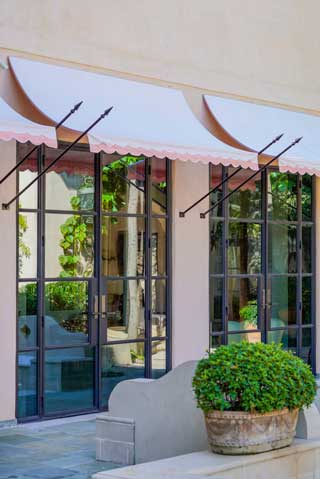
Shepherd Steel Thermal Windows and Doors are extremely durable and have the ability to create large openings, yet have slender 1 ¼” mullions. The high thermal efficiency of this product provides maximum U-value, and you can choose between double or triple pane Low E glass. Shepherd Steel thermal windows and doors can be obtained in a variety of configurations and have great design flexibility. We have standard thermal profile of 1 1/2" x 2" and our Stella Slim-Line that is very thin at 1" x 1 1/2" profile.
• Slender 1 ¼” mullions are engineered to guarantee maximum structural performance while maintaining maximum design freedom.
• Extremely durable – virtually no maintenance costs.
• Each unit is engineered to ensure the highest level of design, meeting all structural requirements, and ensuring customer satisfaction.
• Oversized units available.
• Our windows and doors are DP60 rated.
Galvanizing Steel Doors and Windows Process:
Shepherd Steel Doors and Windows can be Galvanized. This process has solved the issue of our high-quality steel doors and windows from rusting. They DO NOT RUST.
Hot-dip galvanizing is the process of immersing iron or steel in a bath of molten zinc to produce a corrosion resistant, multi-layered coating of zinc-iron alloy and zinc metal. While the steel is immersed in the zinc, a metallurgical reaction occurs between the iron in the steel and the molten zinc. This reaction is a diffusion process, so the coating forms perpendicular to all surfaces creating a uniform thickness throughout the part.
Hot-Dip Galvanizing:
The hot-dip galvanizing process has been used since 1742, providing long-lasting, maintenance-free corrosion protection at a reasonable cost for decades. Although hot-dip galvanizing has been utilized to protect steel for generations, the galvanizing process continues to evolve with new technologies and creative chemistries. The three main steps in the hot-dip galvanizing process are surface preparation, galvanizing, and post-treatment, each of which will be discussed in detail. The process is inherently simple, which is a distinct advantage over other corrosion protection methods.